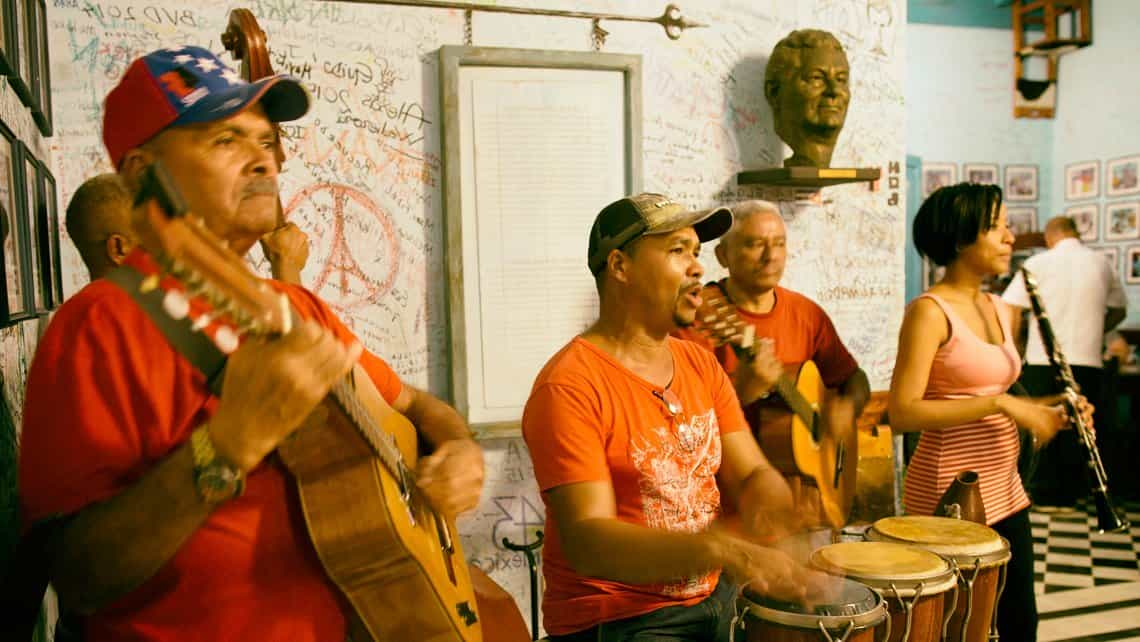Creolization in the Caribbean
The culture of the Caribbean countries has common origins. The experience lived by the Caribbean countries in terms of colonialism, slavery, and the movement of people from other regions at the end of slavery has created a unity of historical experience that defines it in the world. These experiences have created a new society and culture. This Caribbean culture can be explained through the theory of creolization, which will be the theme to be developed in this Blog.
In the book "Tour de Force: A Musical Journey of the
Caribbean" the authors state that creolization is the mixture of musical or
cultural traditions, this mixture is also known as syncretism, and as result creates a new and unique culture. Creolization develops from the discovery
of the Americas by Europe, where the colonizing Europeans (Spanish, English,
French, and Dutch), initially impose their culture on enslaved Africans and try to
prohibit the African culture of said slaves. In this situation, the slaves are
forced to assimilate the culture of their colonizers and thus begins the
mixture of cultures. The Caribbean is internationally known for its wide
cultural display. Its culture has been produced through creolization, which was
initially represented by the cultural exchange between colonizers and African
slaves and later by abolishing slavery, the incorporation of Asian and Indian
cultures by providing labor from those regions to carry out Jobs in the
Caribbean islands. However, it is important to know that creolization is
related to the different elements of culture such as language, clothing, food,
literature, music, dance, and social relations, which are affected by the
interaction of the different cultures.
Music from Cuba.
Picture - Interpretation of the mambo that emerged in Cuba in the late 1930s and is a new form of danzón with African influences and syncopated rhythm.
Below you can see a video that shows the cultural mix in Cuba, produced by the interaction of the culture of the slaves and the Spanish. I chose this video since it is a tribute of remembrance of the victims of Slavery and the Slave Trade
The rhythm in Cuba, an inheritance left by the slaves
The Rhythms of the Rastafari (Jamaica).
The Rastafari are not only among Jamaica's most African-oriented citizens, but they are also among its most inventive synthesizers. Rastafari music, both in its "roots" form, Nyabingi, and in its popular form, reggae, exemplifies this. From the late 1960s onwards, reggae has been associated with the internationalization of the Rastafari Movement, displaying continuing fusions of local folk music with popular strains from overseas.
Bob Marley one of the representatives of Reggae Music
In this video, we show one more example of creolization now in Jamaica with Rastafarian music that is the basis of reggae music so widespread by Bob Marley
References
(2022). Onlinetours.es. https://onlinetours.es/blog/wp-content/uploads/sites/3/2019/12/2041-01-1140.jpg
El ritmo en Cuba, una herencia que dejaron los esclavos. (n.d.). Www.youtube.com. Retrieved May 27, 2022, from https://youtu.be/kFC4Cq6PPdA
Samia Count Ossie & The Mystic Revelations. (n.d.). Www.youtube.com. Retrieved May 27, 2022, from https://youtu.be/csKG39I_DAM
Tschannen, R. A. (2015, August 13). In Jah we trust: how Reggae spread the Rasta word. The Muslim Times. https://themuslimtimes.info/2015/08/13/in-jah-we-trust-how-reggae-spread-the-rasta-word/



Comments
Post a Comment